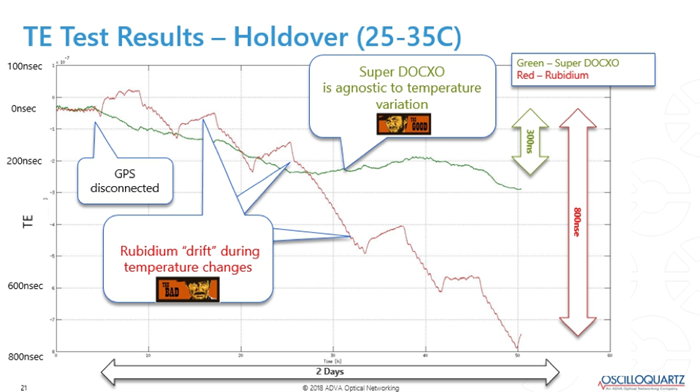The good, the bad and the ugly
Synchronizing distributed network architecture is a major challenge. Highly accurate phase delivery at aggregation sites is becoming more and more vital with the growth of IoT and the emergence of 5G applications.
But the aggregation site can be a tough environment for grandmaster clocks. Firstly, it requires timing technology with new levels of power, size and cost optimization, integrated with a highly scalable network management system. Grandmasters need to be ruggedized and able to operate in wide temperature variations. And, most importantly, they need a backup plan.
Protection in the event of GNSS failure is essential and things can certainly get ugly when networks depend solely on GNSS for timing and synchronization. Jamming and spoofing events are the main threats jeopardizing GNSS availability. Lightning or damaged cables causing antenna breakdown can also be a problem. That’s why grandmasters need to be able to switch to a secondary timing source that can be relied on.
But what if even the secondary source becomes unavailable? Things can get bad very quick unless the grandmaster is also able to change to its own timing source. High-quality internal oscillators with long-term holdover performance are therefore key.
Heating up
Of course, holdover performance depends on the type of oscillator inside the grandmaster clock. Information about holdover capability can be found on data sheets, so it should be easy to choose the right technology for every situation.
However, things aren’t quite that simple. What the data sheets tend to offer is info on performance in strictly temperature-controlled locations. Look out for the words “assuming constant temperature,” or similar.
What they don’t tell you about is real holdover performance in the field where temperature vary wildly. And this makes an enormous difference.
High-quality internal oscillators are typically based on a double oven crystal oscillator (DOCXO) or a miniature rubidium atomic clock. So which oscillator type should be used when considering a distributed grandmaster architecture?
The duel
We decided to put two PTP grandmasters from two leading vendors with two types of oscillator to the test. We wanted to measure their performance under real-world temperature variations, comparing stability, reliability and cost-efficiency.
We subjected super high-performance quartz oscillators (Super DOCXO) and rubidium atomic clocks to the exact same temperature conditions. Both devices were connected to the same GPS simulator using a GNSS splitter and both were powered at the same time, having been locked to GPS for 72 hours before holdover initiation. The temperature in the oven varied between 25°C and 35°C.

The results showed that the rubidium clock under testing was extremely sensitive to temperature variation vs. the Super DOCXO. Its performance was significantly worse compared to constant temperature conditions.
And that’s not something that the data sheets tell you.
From the aggregation site to the core
ITU-T have recently defined a new set of enhanced clocks designed to provide improved timing accuracy. The source of time in the enhanced architecture is the enhanced primary reference time clock (ePRTC), which is typically located at the network core.
So which oscillator type is best suited to the requirements of ePRTC systems, which will be increasingly important in next-generation mobile networks? ePRTC are typically connected to a highly accurate and stable cesium atomic clock that functions as a stable local frequency source, therefore the ePRTC itself doesn’t require an additional rubidium atomic clock.
Due to its reliability and phenomenal temperature stability, Super DOCXO is ideal for ePRTC and distributed PTP grandmaster needs. Just as importantly, it also wins on price and so helps to support the rapid expansion of distributed architecture.
What this highlights for network operators is that it’s essential to choose wisely for the relevant use case and to look to future needs. Rubidium has played a vital role in many situations with its high levels of frequency accuracy straight out of the box. Now, though, free-running accuracy is less important with GPS providing initial calibration.
What today’s operators must do is to select the oscillator type based on realistic holdover scenarios and, in aggregation sites, this means they will be subject to temperature variation. Selecting the type of oscillator that can handle expected onsite thermal conditions is key. And it’s important to factor in worst case scenarios too – what if the air conditioning system fails?
For mobile and data center timing, it’s clear that Super DOCXO wins the shootout and will become increasingly dominant in the near future.
